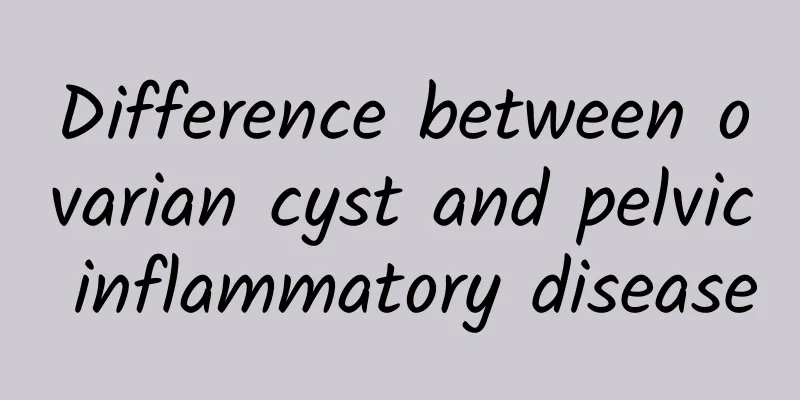Do I need to do any checkup if I have cervical erosion?

|
When there is cervical erosion, cervical cytology (TCT), human papillomavirus (HPV) testing, and colposcopy are recommended to identify the cause and rule out cervical lesions. These tests help assess the health of the cervix and guide subsequent treatment. 1. Cervical cytology test (TCT) TCT is a common method for screening cervical lesions. It collects cell samples from the surface of the cervix to detect whether there are abnormal cells. This test is simple and painless, and can detect cervical precancerous lesions or cervical cancer at an early stage. It is recommended that women who have sexual activity undergo regular TCT examinations, especially when they have symptoms of cervical erosion. 2. Human papillomavirus (HPV) testing HPV infection is one of the main causes of cervical lesions. The risk of infection can be assessed by detecting HPV virus in cervical secretions. Persistent infection with high-risk HPV may increase the risk of cervical cancer, so HPV testing is particularly important for patients with cervical erosion. If the test result is positive, further evaluation is required in combination with TCT results. 3. Colposcopy A colposcope is an instrument that magnifies the cervix and is used to observe subtle changes on the surface of the cervix. Through colposcopy, doctors can more intuitively determine the scope and extent of cervical erosion and perform a biopsy to confirm the diagnosis if necessary. This examination is suitable for patients with abnormal TCT or HPV test results or those with obvious symptoms of cervical erosion. The treatment of cervical erosion requires a personalized plan based on the examination results. If the examination results show physiological erosion, no special treatment is usually required and regular checkups are sufficient. If inflammation or infection is present, the following measures can be taken: Drug treatment: Use antibiotics such as metronidazole or antiviral drugs such as acyclovir to control infection, and apply anti-inflammatory ointments such as erythromycin ointment topically to relieve symptoms. Physical therapy: For patients with obvious symptoms, physical methods such as laser, freezing or microwave can be used to repair cervical tissue. Adjustment of lifestyle habits: Keep the vulva clean, avoid using irritating lotions, choose underwear with good breathability, and reduce the frequency of sexual intercourse. Although cervical erosion is common, most patients can effectively control the condition through scientific examination and standardized treatment. It is recommended that female friends pay attention to their own health, conduct regular gynecological examinations, and detect and treat it early to avoid worsening of the disease. If abnormal symptoms occur, such as increased vaginal discharge, odor, or bleeding after sexual intercourse, you should seek medical attention in time to identify the cause and take appropriate measures. |
<<: What to eat for amenorrhea caused by ovarian decline
>>: What medicine can eliminate uterine cysts?
Recommend
Experts introduce important tips for treating ectopic pregnancy
After the treatment of ectopic pregnancy, the pat...
Symptoms of uterine fibroids that need to be explained in detail
The symptoms of uterine fibroids need to be under...
What are Siwu Granules?
Siwu Granule is a traditional Chinese medicine pr...
4 tips to help you go to work in high spirits after a workout
Going to the gym in the morning to exercise befor...
Does the thickness of the endometrium affect pregnancy?
Will the thickening of the endometrium affect pre...
TCM prescriptions for abdominal pain after abortion
Traditional Chinese medicine believes that long-t...
Preventive health care methods for menopausal women
We all know that menopause can cause great harm t...
Will irregular menstruation affect my eyes?
The impact of irregular menstruation is far-reach...
Can a gum cyst cause an ovarian cyst?
Can a gum cyst cause an ovarian cyst? Gingival cy...
Traditional remedies for treating vulvar leukoplakia
There is no traditional remedy for vulvar leukopl...
How many days does it take for a woman to bleed after an abortion? It is normal for a woman to bleed after an abortion. It is recommended to use 5 methods to treat it.
We all know that if necessary protective measures...
Comparison of the four magic tools of traditional Chinese medicine: scraping, massage, cupping, and acupuncture
Because of the love of cupping by Brazil's Ri...
What are the symptoms of tumorous ovarian cysts?
Did you know that gynecological ovarian cysts can...
Why should ectopic pregnancy be treated promptly?
For the treatment of ectopic pregnancy, surgical ...
What are the main causes of vulvar leukoplakia?
What are the main causes of vulvar leukoplakia? I...









